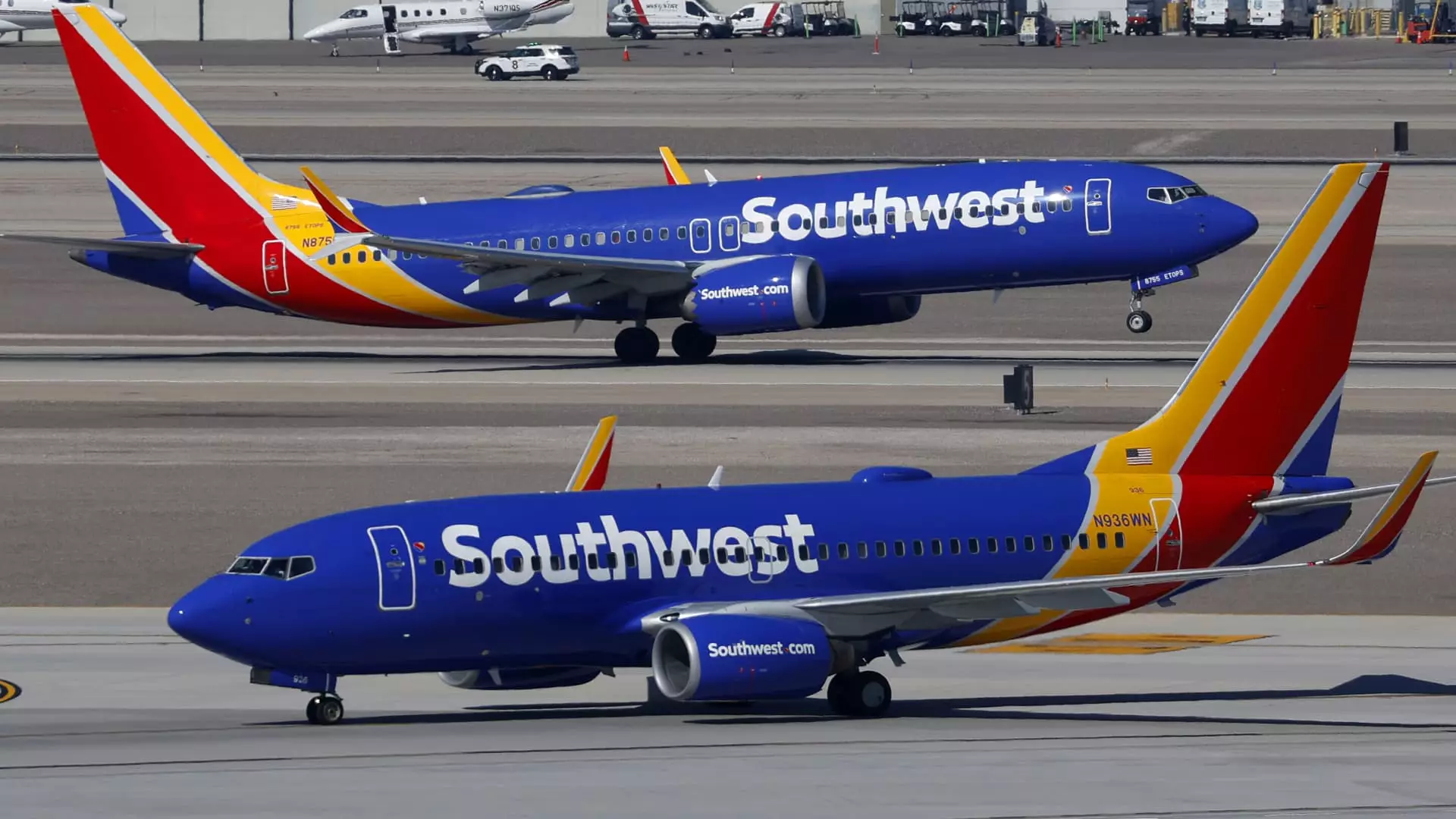For decades, Southwest Airlines has proudly championed the open seating policy, a hallmark that set it apart from other carriers and cultivated a unique travel experience for millions of passengers. This policy fostered a sense of spontaneity and community—passengers would arrive early for a chance at a preferred seat, creating a lively and democratic boarding process. However, in a rapidly changing aviation landscape driven by rising costs and fierce competition, Southwest has made the controversial decision to abandon this longstanding tradition. Starting January 27, 2024, passengers will be assigned seats, a move that signifies much more than just a new boarding procedure—it reflects a strategic pivot aimed at long-term viability.
This shift is not merely cosmetic; it fundamentally alters the airline’s identity. The open seating model allowed Southwest to uphold a reputation for affordability, simplicity, and a sense of freedom. Now, the airline is opting for a more structured approach, one that prioritizes efficiency, revenue growth, and customer segmentation. Although this decision may confront the loyalty of traditionalists, it showcases Southwest’s willingness to adapt in an industry where necessity often demands innovation.
Transforming Revenue Strategies in a Competitive Market
Southwest’s decision aligns with broader industry trends emphasizing ancillary revenue streams and cost management. The airline’s leadership has announced ambitions to boost earnings by billions over the next few years, partly through new fee structures and fare options. Transitioning from free checked bags to charging for them on many routes exemplifies this drive—an effort to diversify income sources that have historically underpinned Southwest’s reputation for affordability.
Assigning seats in advance enables the airline to better manage load factors and optimize aircraft utilization. This move appears aimed at capturing incremental revenue from seat selection fees, catering to passengers willing to pay extra for preferred or extra-legroom seats. While competitors like American and Delta have long employed complex fare tiers and charge for upgrades, Southwest seems intent on leveraging its reconfigured fleet—already outfitted with more premium seating options—to maximize profit without sacrificing customer choice. By creating a tiered boarding process, Southwest also hopes to improve turnaround times, further enhancing operational efficiency.
This pragmatic approach underscores a shift from its earlier, more egalitarian ethos towards a model that balances customer loyalty with profitability. While some might view this as a betrayal of Southwest’s roots, the airline’s strategy appears to recognize the realities of modern aviation—where every dollar counts—and aims to stay competitive without sacrificing customer service excellence.
The New Boarding Experience: From Chaos to Control
The most visible change is the elimination of the familiar A-B-C boarding groups and the scramble for coveted seats. Instead, passengers will be assigned boarding groups based on their status, ticket type, and seat selection. Elite frequent flyers, top-tier credit cardholders, and premium passengers will board first, ensuring their loyalty benefits translate into tangible advantages. Regular ticket holders will still have a chance to secure preferred seats but will do so through a structured, predictable process.
This overhaul is designed with an eye toward efficiency and fairness. Two boarding queues will be set up, replacing the chaos of the past, and boarding order will be determined by a combination of fare class, loyalty program status, and optional seat selection. Although the airline has not yet disclosed pricing for seat assignments, it is likely this will become a significant revenue driver, offering standard, preferred, and extra-legroom options that cater to different customer segments.
While critics may mourn the loss of spontaneity and camaraderie fostered by open seating, Southwest’s data-driven approach suggests the airline is confident that passengers will appreciate the predictability and personalized options. The cost-benefit balance aims to enhance operational efficiency, reduce turnaround times, and, ultimately, improve profitability—all while maintaining some element of choice for customers.
The Reimagined Passenger Experience: Balancing Efficiency and Loyalty
Southwest has emphasized that its new policies are carefully designed to preserve core customer values—such as sitting together and having control over seat choice—while embracing change. The optionality offered by upgraded seats and early boarding aims to give families and loyal travelers the flexibility they desire in a new, more structured environment.
Nevertheless, this transition signals a broader philosophical debate: can an airline anchored in simplicity and egalitarian service successfully navigate the pressures of modern profitability? Southwest’s move suggests it believes so. The airline’s reconfiguration efforts—adding extra-legroom seats, refining boarding procedures, and introducing tiered offerings—show a commitment to evolving without erasing its distinctive culture.
In the end, this strategic overhaul is not just about new procedures; it’s a statement. Southwest is acknowledging that survival and growth in an increasingly consolidated and competitive industry require adaptability. It’s a challenge to its own traditions, but also an opportunity to redefine its future—one where efficiency, loyalty, and revenue growth become the new pillars of its identity.


Leave a Reply